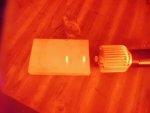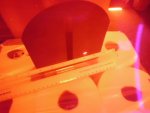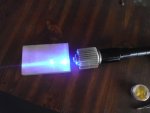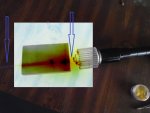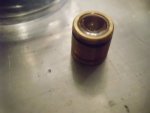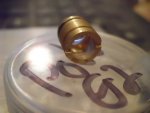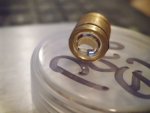The three element gave me the tightest spot out of the following collimators that I have tried:
DTR G2 (Won't screw far enough into my OPT TO-5 brass diode housing to focus)
DTR three element
OPT three element
OPT single lens
Sanwu G7 (hasn't arrived yet, will test when it does)
A pair of 25mm lenses from Edmund to create a 4x expander is only $69. With this option, I know exactly what I am getting with all the datasheets they provide.. The lenses have 1.25% reflectance at 520nm, MgF2 coating, etc. The expander from Sanwu is 60$ and has no data on anything. Who knows what the surface quality, coating, reflectance, max power density, etc. is?











